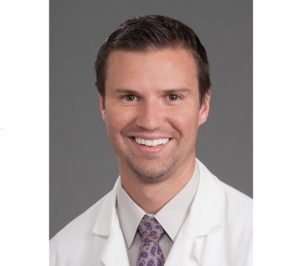
Fifty-six per cent of US neurointerventionalists meet criteria for burnout. This statistic, presented by Kyle Fargen from Wake Forest Baptist Health in Winston-Salem (USA) at the Society of NeuroInterventional Surgery’s (SNIS) annual meeting (22–25 July, Miami, USA), was based on a recent survey examining burnout and professional satisfaction among US neurointerventionalists.
A multivariate regression revealed that feeling underappreciated by departments or institutions are independent predictors of burnout, while additional payments for stroke call is protective against burnout. Moreover, Fargen reported that physicians that covered more than one hospital on call had a two times higher odds of burnout compared to those that covered a single hospital while on call.
Addressing the SNIS audience, Fargen reiterated the unfortunate statistics associated with the topic: “Suicide is a leading cause of death in male residents and the second leading cause in female residents. Ten per cent of medical students report suicidal ideation [and] about 400 doctors commit suicide every year. As a population, we are about twice as likely as the general population to do so.” He added, “Whether you believe in [burnout] or not, it has become a huge talking point in the medical community.”
While burnout is associated with poor quality of life, depression, alcoholism, and suicidal ideation in physicians, it also carries negative implications for patients. According to Fargen, physicians meeting criteria for burnout are more likely to make medical errors, and are 17% more likely to face malpractice lawsuits. “So we wanted to look at burnout for our population, and the impetus for doing so was the ever increasing burden of stroke,” he said.
Referring to a previous investigation, Fargen acknowledged that in 2016, a thrombectomy procedure occurred every five days, whereas in 2017 they rose to one every three days. “Now, after DAWN and DEFUSE 3, our unpublished research shows that a thrombectomy procedure occurs more frequently than one every two days. This means that two hours a day—124 minutes—is spent on stroke. “This is why physician representatives and leaders of all three neurointerventional organisations were involved in the development and dissemination of the survey.”
The 39 question online survey was comprised of 17 demographic, career or personal questions, and 22 from the Maslach Burnout Inventory Human Services Survey (MBI-HSS) for medical personnel. It elicits scores pertaining primarily to three domains: emotional exhaustion, depersonalisation and personal accomplishment.
Findings from the US survey
Fargen described the survey as a having an excellent response rate, explaining that the 321 responses represent a third of all US neurointerventionalists. “As a whole, 56% of our respondents met criteria for burnout, which falls right into the 50–60% range [for all physicians].” He added, “I thought that maybe we would see a higher personal accomplishment score in our specialty compared to others, but that was not the case.”
Alluding to some good news, he highlighted that even though 55% of neurointerventionalists meet criteria for burnout, life and career satisfaction scores within the field are high. “On a scale of one to 10, most people rate their career choice and happiness overall anywhere from seven to nine,” he said.
In terms of the risk factors for burnout, he noted, “There is no difference based on training background, no difference on practice setting, or based on years of independent practice. Interestingly, there was also no difference based on stroke call frequency. Obviously, we predicted that people taking calls every day or every other day would be at higher risk—but that is not the case.”
Yet, of importance, he told the SNIS audience that survey extracted some worrying figures: “It seems that half of us are taking a call every day or every other day, which seems excessive, and probably a problem.”
Reiterating the “protective” nature of additional compensation, Fargen said that 45% of neurointerventionalists report getting additional compensation for every 24-hour call. Interestingly, he also commented that at each step up of pay, there is a reduction in odds (of meeting burnout criteria) by 0.4. “This data is available in our publication,” he told delegates, adding that he used this data to argue for additional call compensation after the study was complete.
Concluding his talk, he called for attendees to further their awareness and understanding of the issue at hand. “This is something that is here to stay. Pay attention to your work environment, your colleagues, and look out for your trainees. There is resiliency and mindfulness training for those that are concerned. Burnout should be a shared responsibility between physicians and health care systems, but realistically, until healthcare systems do their share, own it and be vigilant about it.”
Providing further insight on the matter, Philip M Meyers, associate professor of Radiology and Neurological Surgery, Columbia University, College of Physicians and Surgeons, New York, USA, speaks to NeuroNews and echoes the importance of the topic.
“Burnout has become a common theme in modern industrial society, and physicians are not exempt”, he says. “While the practice of medicine has often been referred to as a noble calling, physicians have demanding jobs, requiring dedication, time, and personal sacrifice. Medscape conducted its annual report on physician burnout, depression and suicide in 2019, identifying burnout in 44% of more than 15,000 US physicians surveyed, particularly in those working more than 70 hours per week, often affecting their interactions with family, patients, staff, and colleagues. More than one physician commits suicide per day in the USA, a rate higher than any other profession. The majority of physicians do not seek help.
“Following the success of numerous stroke trials, the demand for emergency stroke care has increased dramatically. More than half of the 321 neurointerventionalists surveyed are on-call for neurological emergencies every other night. Moreover, the requisite 30-minute response time and stringent stroke practice metrics take their toll on physician wellbeing.
“Covering multiple hospitals simultaneously and feeling underappreciated were strong, independent predictors of burnout in Kyle Fargen’s model. Fewer than half of respondents receive additional compensation for their efforts. Fargen called for greater awareness and proactive measures to combat burnout among neurointerventionalists. As the need for neurointerventional services expand, a new balance between skilled work-force training and the demand for medical services must be met.”










